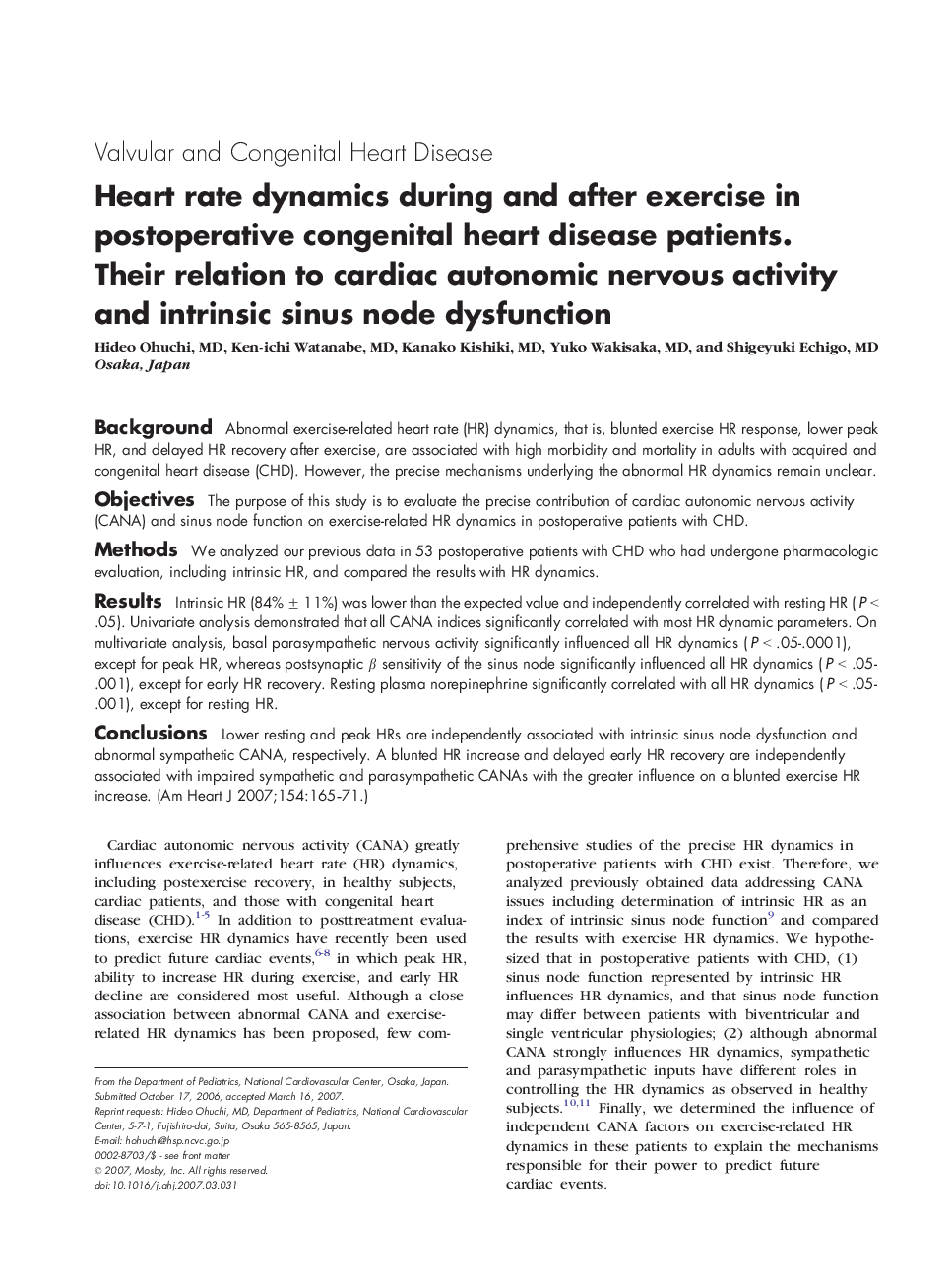| Article ID | Journal | Published Year | Pages | File Type |
|---|---|---|---|---|
| 2849160 | American Heart Journal | 2007 | 7 Pages |
BackgroundAbnormal exercise-related heart rate (HR) dynamics, that is, blunted exercise HR response, lower peak HR, and delayed HR recovery after exercise, are associated with high morbidity and mortality in adults with acquired and congenital heart disease (CHD). However, the precise mechanisms underlying the abnormal HR dynamics remain unclear.ObjectivesThe purpose of this study is to evaluate the precise contribution of cardiac autonomic nervous activity (CANA) and sinus node function on exercise-related HR dynamics in postoperative patients with CHD.MethodsWe analyzed our previous data in 53 postoperative patients with CHD who had undergone pharmacologic evaluation, including intrinsic HR, and compared the results with HR dynamics.ResultsIntrinsic HR (84% ± 11%) was lower than the expected value and independently correlated with resting HR (P < .05). Univariate analysis demonstrated that all CANA indices significantly correlated with most HR dynamic parameters. On multivariate analysis, basal parasympathetic nervous activity significantly influenced all HR dynamics (P < .05-.0001), except for peak HR, whereas postsynaptic β sensitivity of the sinus node significantly influenced all HR dynamics (P < .05-.001), except for early HR recovery. Resting plasma norepinephrine significantly correlated with all HR dynamics (P < .05-.001), except for resting HR.ConclusionsLower resting and peak HRs are independently associated with intrinsic sinus node dysfunction and abnormal sympathetic CANA, respectively. A blunted HR increase and delayed early HR recovery are independently associated with impaired sympathetic and parasympathetic CANAs with the greater influence on a blunted exercise HR increase.
